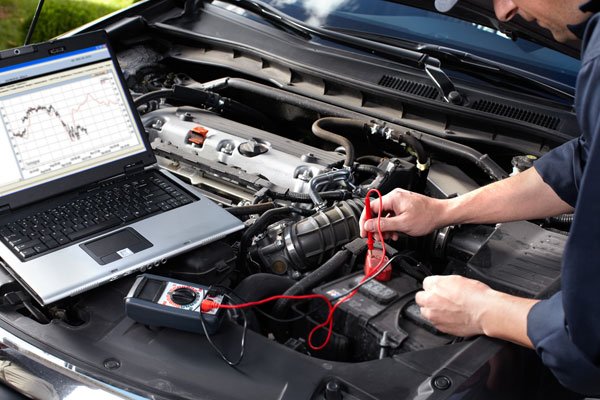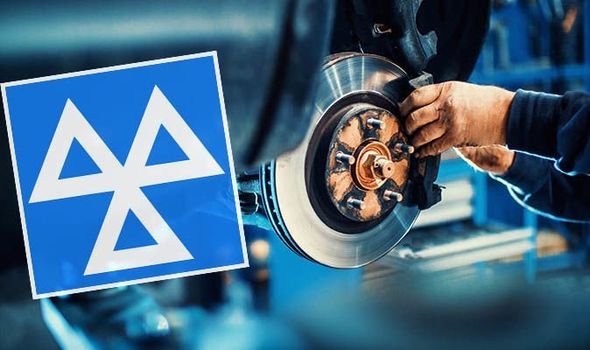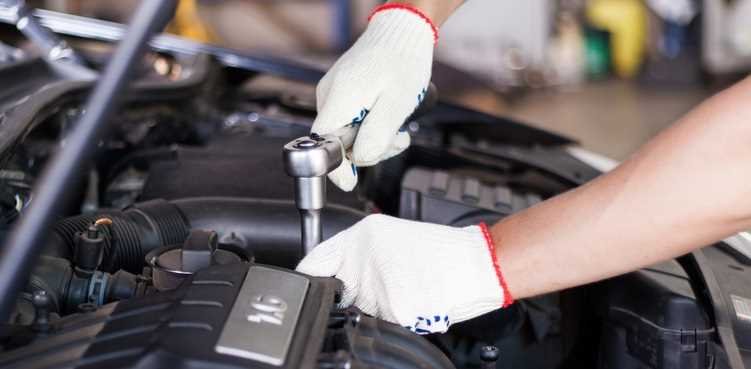Why a Vehicle Inspection Check Matters
Every car on UK roads must meet strict safety and environmental standards — and that’s exactly what the MOT test ensures. A vehicle inspection check isn’t just a routine formality; it’s a critical process designed to keep you, your passengers, and other road users safe.
When you take your car for its MOT, mechanics follow a carefully structured checklist set out by the Driver and Vehicle Standards Agency (DVSA). This inspection covers everything from brakes and tyres to lights and emissions.
In this guide, we’ll walk you through what mechanics look for during your MOT test, what can cause your car to fail, and how to prepare your vehicle in advance.
What Is a Vehicle Inspection Check?
A vehicle inspection check is the detailed examination performed during an MOT test to confirm whether a vehicle meets minimum legal roadworthiness standards.
The inspection focuses on three main areas:
-
✅ Safety — Is the vehicle safe to drive?
-
🌿 Emissions — Does the vehicle meet environmental requirements?
-
📋 Legal compliance — Are registration details, number plates, and VIN correct?
The test isn’t the same as a full service. Instead, it’s a legal requirement that focuses on key components that affect safety and emissions.
The MOT Inspection Checklist: Key Areas Mechanics Examine
Mechanics follow a standardized list to ensure every MOT test is thorough and fair. Below are the main components they inspect during the vehicle inspection check.
1. Vehicle Identification Number (VIN) and Registration Plates
The first step of any MOT test involves confirming your car’s identity.
Mechanics check:
-
VIN is clearly visible and matches DVLA records.
-
Number plates are clean, secure, and legal.
-
Font, spacing, and reflectivity comply with regulations.
🚨 Faded or damaged plates can result in an MOT fail — even if the rest of your car is in top condition.
2. Lights and Indicators
Faulty lights are one of the most common reasons for MOT failures in the UK.
Mechanics check:
-
Headlights (both dipped and full beam)
-
Brake lights, indicators, fog lights, and hazard lights
-
Number plate illumination
-
Alignment, brightness, and cleanliness
💡 Tip: Walk around your car and test all lights before the appointment. Replacing a bulb is cheap and can prevent a failure.
3. Steering and Suspension
The steering and suspension system ensures your car remains stable and responsive on the road.
Mechanics check:
-
Steering wheel and column for wear or looseness
-
Power steering fluid levels and performance
-
Suspension components for wear, leaks, or damage
-
Shock absorbers and coil springs
🧰 Unusual noises when turning or driving over bumps can indicate suspension issues that need fixing before the test.
4. Brakes and Brake Performance
Brakes are critical for safety and are thoroughly tested during MOT.
Mechanics check:
-
Brake pedal response and handbrake operation
-
Brake pads, discs, and shoes
-
Hydraulic leaks or corrosion
-
ABS warning light function
The vehicle will also be tested on a roller brake tester to measure stopping efficiency.
🚨 Worn brake pads or leaking brake fluid can lead to immediate failure.
5. Tyres and Wheels
Your tyres are the only point of contact between your vehicle and the road, so they must meet legal standards.
Mechanics check:
-
Tread depth (minimum 1.6mm)
-
Tyre pressure and condition
-
Signs of cuts, bulges, or uneven wear
-
Wheel alignment and security
✅ Use a tread depth gauge or the 20p coin test before booking your MOT.
6. Seat Belts and Seats
Seat belts are essential for occupant safety, and mechanics inspect them carefully.
Mechanics check:
-
Seat belts lock and retract properly
-
Belts are not frayed, cut, or damaged
-
Seats are secure and adjust as intended
🚗 A faulty seatbelt can result in an automatic fail, no matter how good the rest of your car is.
7. Windscreen, Wipers, and Washers
Visibility is crucial for safe driving, and mechanics ensure your windscreen and wipers meet standards.
Mechanics check:
-
No cracks or chips in the driver’s line of vision
-
Wipers are functional and not damaged
-
Washer fluid sprays correctly
🧽 An empty washer fluid bottle alone can cause a failure, so top it up before your test.
8. Mirrors and View of the Road
The MOT test ensures the driver has a clear view of the road in all directions.
Mechanics check:
-
Rear-view and side mirrors are intact and secure
-
Mirrors provide adequate coverage and are not cracked
-
No obstructions on the windscreen
🪞 Tinted windscreens or stickers in the wrong place can lead to advisories or fails.
9. Exhaust System and Emissions
Your exhaust system plays a major role in reducing pollution.
Mechanics check:
-
Exhaust is secure with no leaks
-
No excessive smoke or noise
-
Emissions meet legal limits
Diesel vehicles undergo an additional smoke opacity test. A failing exhaust or high emissions can lead to costly repairs.
10. Fuel System
A leaking or poorly secured fuel system can be dangerous.
Mechanics check:
-
Fuel lines are secure and not leaking
-
Fuel tank cap seals properly
-
No strong smell of fuel in or around the vehicle
⛽ Regular maintenance can help prevent leaks and other fuel-related issues.
11. Horn, Electrical Systems, and Battery
Even small electrical faults can cause an MOT failure.
Mechanics check:
-
Horn is loud and works properly
-
Battery is secure and not leaking
-
Wiring is safe and undamaged
🔋 A weak battery won’t fail the MOT but may affect the horn or lights, leading to advisories.
12. Body Structure and Doors
Mechanics inspect the vehicle body to ensure it’s structurally sound.
Mechanics check:
-
Doors open and close from inside and outside
-
Body panels aren’t dangerously corroded or damaged
-
Bonnet and boot function correctly
🧰 Rust on critical parts like sills or suspension mounting points can be an MOT fail.
13. Registration Documents and Legal Compliance
Although the MOT focuses on the vehicle, mechanics also verify basic legal details.
Mechanics check:
-
Registration number matches vehicle
-
VIN corresponds to records
-
Mileage records are noted for history
📑 Always ensure your car’s paperwork is in order.
Common Reasons Vehicles Fail MOT Inspection
| Reason | Why It Matters | How to Prevent It |
|---|---|---|
| Faulty lights | Reduces visibility | Check and replace bulbs in advance |
| Worn tyres | Unsafe grip | Maintain tread depth and pressure |
| Brake issues | Increases stopping distance | Regular brake servicing |
| Wiper or washer failure | Reduces visibility | Replace blades, top up washer fluid |
| Emissions failure | Fails environmental standards | Regular servicing, fix exhaust leaks |
| Seatbelt issues | Safety hazard | Inspect and replace damaged belts |
How to Prepare for a Vehicle Inspection Check
Preparation can save you time, stress, and money. Here’s how:
-
Do your own pre-MOT checks (lights, tyres, washer fluid).
-
Clean the car inside and out for better inspection.
-
Bring your documents (logbook, insurance, old MOT).
-
Service your car a few weeks before MOT.
-
Fix minor issues early to avoid last-minute costs.
✅ Simple preparation can prevent 7 out of 10 common MOT failures.
What Happens If Your Car Fails the MOT?
If your vehicle fails the vehicle inspection check, the garage will give you a “Refusal of MOT Test Certificate.” You then have two options:
-
Fix the issues at the same garage (often cheaper and faster).
-
Take the failure sheet elsewhere for repairs.
You may be entitled to a free partial retest if you return within 10 working days.
MOT Retests and Advisories
-
A minor fault won’t cause a fail, but it will be recorded as an advisory.
-
Serious defects mean a fail, and the vehicle can’t be legally driven.
-
Always read your MOT certificate carefully and fix advisories early.
How Often Should You Do a Vehicle Inspection Check?
Legally, MOT is required once a year for most vehicles over three years old. However, doing your own regular inspection checks can:
-
Improve your vehicle’s reliability
-
Prevent breakdowns
-
Save money on repairs
-
Help you pass the MOT on the first try
🔁 Monthly checks of tyres, lights, and fluids are highly recommended.
The Role of DVSA in MOT Vehicle Inspections
The Driver and Vehicle Standards Agency regulates MOT tests in the UK. They:
-
Set the inspection standards
-
Approve MOT centres
-
Monitor testing procedures
-
Ensure fair and consistent vehicle inspections
This means every MOT centre follows the same process, ensuring fairness and safety across the country.
Benefits of a Proper Vehicle Inspection Check
-
🚗 Keeps your vehicle roadworthy
-
🌿 Reduces environmental impact
-
💰 Saves money by catching issues early
-
🛡️ Prevents legal penalties
-
🧭 Boosts confidence while driving
MOT Exemptions: Who Doesn’t Need a Test
Some vehicles may be exempt from MOT, including:
-
Classic cars over 40 years old (not substantially modified).
-
Electric goods vehicles built before 1960.
-
Certain agricultural and industrial vehicles.
However, even exempt vehicles must still be safe to drive.
Top Tips to Pass Your Vehicle Inspection Check
-
Check all bulbs, tyres, and wipers.
-
Fix dashboard warning lights.
-
Top up all fluids.
-
Clean your car thoroughly.
-
Arrive at the test centre on time with documents.
Pass Your MOT with a Strong Vehicle Inspection Check
An MOT test may seem intimidating, but it’s really about one thing: safety. By understanding what mechanics look for during the vehicle inspection check, you can prepare your car, avoid common pitfalls, and pass with confidence.
Whether it’s your first MOT or your tenth, taking the time to check your vehicle before the test can save you time, money, and stress. 🚘✅
FAQs – Vehicle Inspection Check
Q1: What is included in a vehicle inspection check?
👉 Lights, tyres, brakes, suspension, exhaust, mirrors, seatbelts, and more.
Q2: Can I do my own pre-MOT check?
✅ Yes, simple checks like lights and tyre tread can be done at home.
Q3: How long does a MOT vehicle inspection take?
⏱️ Typically between 45 minutes to 1 hour.
Q4: Will I get a certificate after passing the MOT?
📄 Yes, a digital MOT certificate will be issued.
Q5: How can I avoid MOT failure?
🧰 By maintaining your car regularly and addressing small issues early.
Get MOT Done: A Complete Guide to Preparing Your Vehicle for MOT Testing
DVLA MOT Check: How to Use the Official DVLA Service to Check MOT History
My MOT Check: How to Check Your MOT History Using Your Registration Number
Vehicle MOT Check Why You Must Check Your Car’s MOT Before Driving



